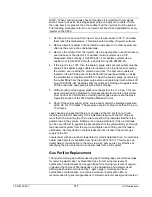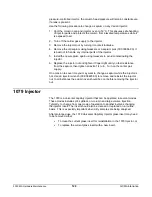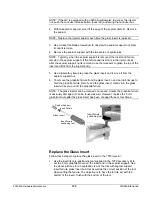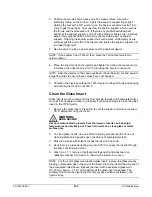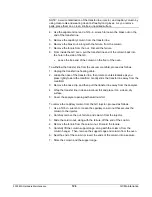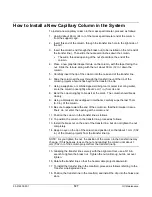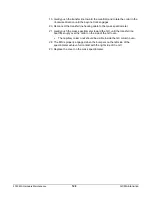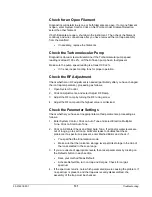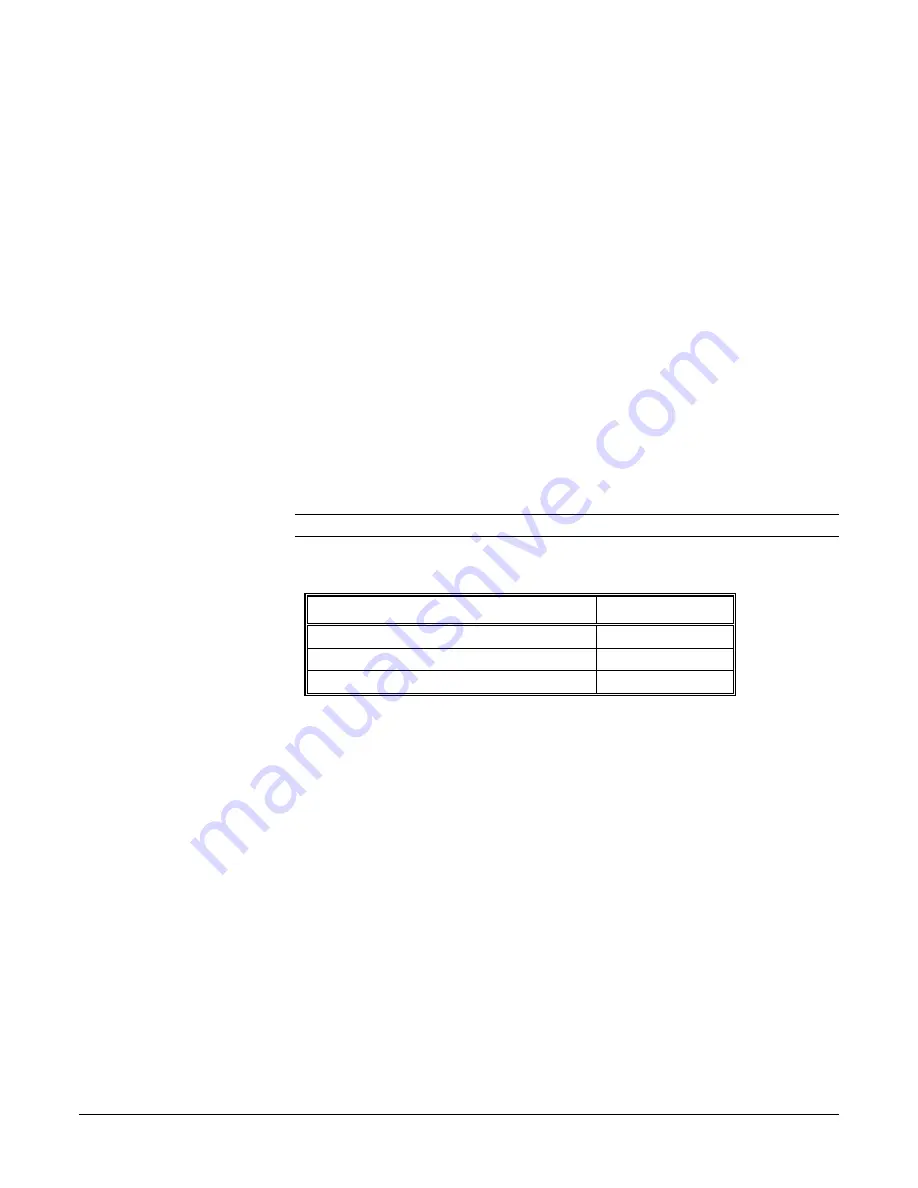
03-914978-00:1
119
GC Maintenance
If Filters are Mounted on a Separate Stand:
Filters have been supplied in either a single combined
moisture/hydrocarbon/oxygen filter arrangement or as two filters (a
moisture/hydrocarbon filter and oxygen filter). Two valves automatically take care
of stopping and starting the gas flow. Each filter is replaced using the following
procedure:
1. Remove the saturated filter by unscrewing the knurled nut. The system
remains under pressure.
2. Check the O-rings for hairline cracks. Cracked rings may cause leakage. If
cracks are found replace all rings.
3. Remove the filter from the packaging and remove the self-adhesive foil from
the bottom of the filter. Place the filter onto the connecting unit.
4. Place the knurled ring nut over the filter and screw it on, while pressing the
filter down. Some force may be necessary if the system is under high
pressure.
5. Carefully check the connection for leakage. This is important as oxygen and
moisture from the air enter the system through the tiniest leaks.
6. Mark the date of installation on the calendar in the filter label with a felt tip
pen.
NOTE: Review the instructions supplied with the replacement filters.
The following are the stand-alone gas purifiers available from Varian.
Purifier Part
Number
Indicating oxygen trap
CP17970
Indicating moisture trap
CP17971
Combined hydrocarbon/moisture/oxygen trap
CP17973
Injector Maintenance
The injector is the component of the Gas Chromatograph that requires the most
frequent maintenance. This is due to the fact that the sample is deposited in the
injector, thus leading to potential contamination and build up of non-volatile
deposits. The most frequent injector maintenance is septum replacement. In
addition insert replacement and injector cleaning are very common. As septum
replacement is common to all liquid injectors on the 3800 this procedure is
presented first, followed by specific maintenance procedures for the individual
injectors.
Septum Replacement
The injector septum is an expendable part and must be replaced on a routine
basis. The frequency of replacement depends on the number of injections and
whether the injections are by hand or with an autosampler. In general the septum
should be replaced every 50 - 100 injections or when symptoms of a septum leak
are seen. These symptoms include changing retention times, reduced detector
response or a drop in column head pressure. The latter symptom is not always
valid as some injectors, such as the 1079, are pressure controlled. With a













